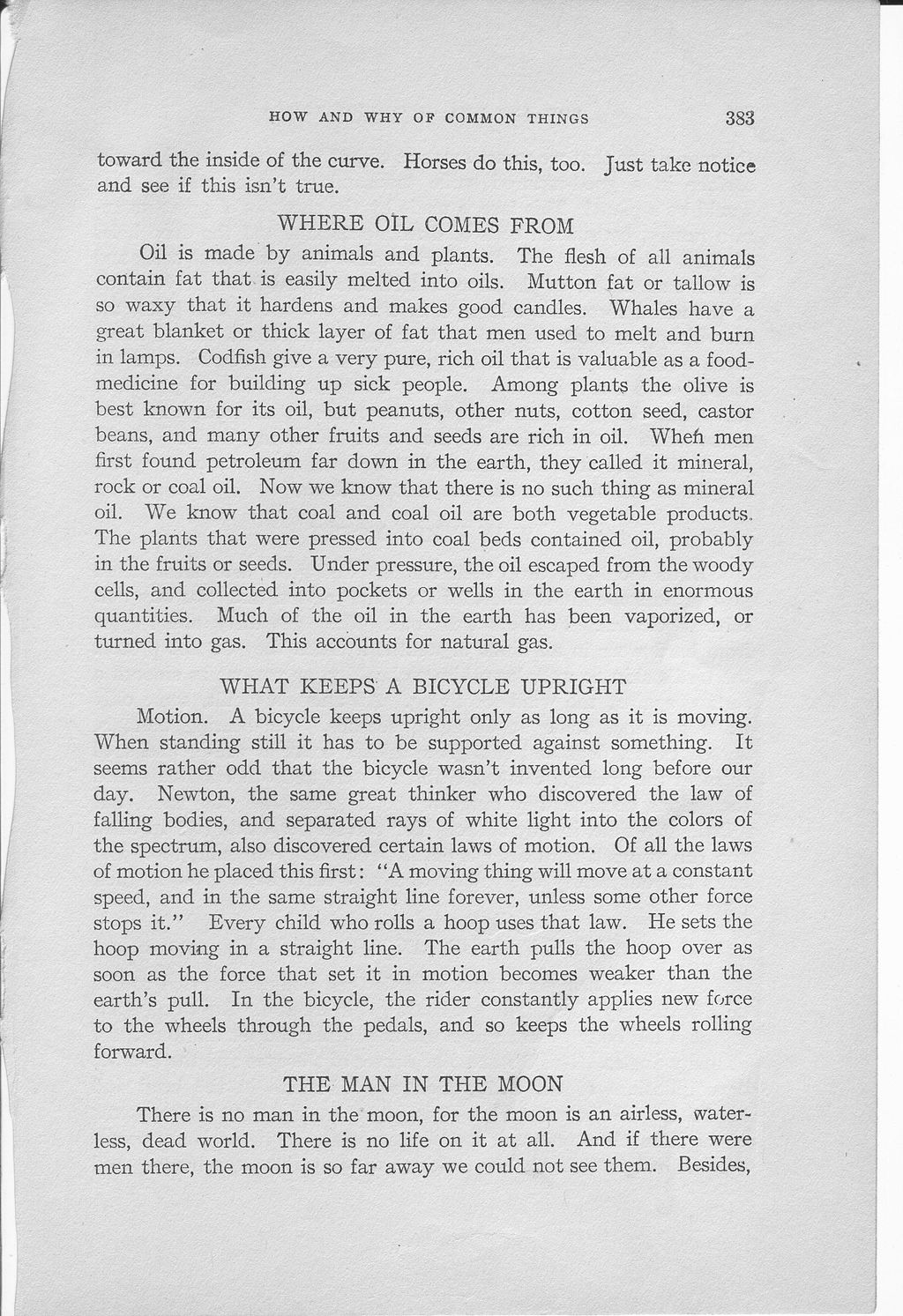toward the inside of the curve. Horses do this, too. just take notice and see if this isn’t true.
WHERE OIL COMES FROM
Oil is made by animals and plants. The flesh of all animals contain fat that is easily melted into oils. Mutton fat or tallow is so waxy that it hardens and makes good candles. Whales have a great blanket or thick layer of fat that men used to melt and burn in lamps. Codfish give a very pure, rich oil that is valuable as a food-medicine for building up sick people. Among plants the olive is best known for its oil, but peanuts, other nuts, cotton seed, castor beans, and many other fruits and seeds are rich in oil. When men first found petroleum far down in the earth, they called it mineral, rock or coal oil. Now we know that there is no such thing as mineral oil. We know that coal and coal oil are both vegetable products. The plants that were pressed into coal beds contained oil, probably in the fruits or seeds. Under pressure, the oil escaped from the woody cells, and collected into pockets or wells in the earth in enormous quantities. Much of the oil in the earth has been vaporized, or turned into gas. This accounts for natural gas.
WHAT KEEPS A BICYCLE UPRIGHT
Motion. A bicycle keeps upright only as long as it is moving. When standing still it has to be supported against something. It seems rather odd that the bicycle wasn’t invented long before our day. Newton, the same great thinker who discovered the law of falling bodies, and separated rays of white light into the colors of the spectrum, also discovered certain laws of motion. Of all the laws of motion he placed this first: "A moving thing will move at a constant speed, and in the same straight line forever, unless some other force stops it." Every child who rolls a hoop uses that law. He sets the hoop moving in a straight line. The earth pulls the hoop over as soon as the force that set it in motion becomes weaker than the earth's pull. In the bicycle, the rider constantly applies new force to the wheels through the pedals, and so keeps the wheels rolling forward.
THE MAN IN THE MOON
There is no man in the moon, for the moon is an airless, waterless, dead world. There is no life on it at all. And if there were men there, the moon is so far away we could not see them. Besides,
